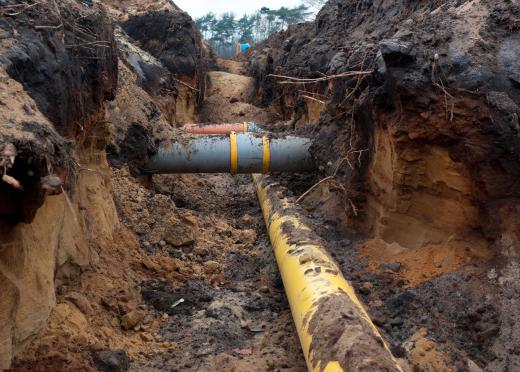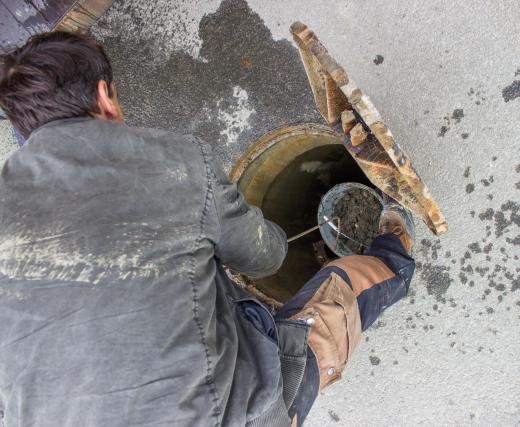A vacuum sewer system relies on negative pressure to transport waste to a processing facility. Early versions of this system were developed in the late 1800s in Europe, but primarily remained in use aboard transport vehicles like aircraft for over a century. Communities began exploring vacuum sewer systems in their early 2000s to see if they could offer environmental and other advantages over conventional gravity sewers. There are some benefits to using this approach, including more cost effectiveness and environmental friendliness.
Inside a vacuum sewer system, waste from an individual structure moves to a collection chamber. When it reaches a critical point, a valve opens, typically actuated by a floater which can activate when the liquid exceeds a given height inside the tank. The contents of the tank are sucked into pipelines through negative pressure, which is maintained by pumps in a remote vacuum station. This pulls the raw sewage to collection tanks so it can be routed to a processing facility.

The pumps are a key component of the vacuum sewer system. They maintain the negative pressure necessary to keep the system working, and are carefully maintained to prevent backflow and other issues. System sizing depends on the area that needs to be covered, and must leave room for growth to prevent the need to retrofit shortly after installing it. It can be used to provide sewer services to a region of a city or an entire city and outlying areas, depending on how much public officials want to invest in public works.

Environmentally, a vacuum sewer can be better than a gravity-fed sewer system. Less water is required per flush, which both reduces water usage and limits contamination of usable water with sewage. In addition, the system uses minimal electricity, as the only place where power is needed is the central pumping facility. There are also economic advantages; the piping can be smaller because of the way the system operates. It can also be much less costly to install a vacuum sewer system.
While this type of sewer system is known as a “vacuum sewer,” this is a bit of a misnomer. It actually relies not on a pure vacuum, but on differentials in air pressure. The pumps create negative pressure which draws sewage into the plumbing. Individual structures connected to the vacuum sewer system need to be sure their valves are properly maintained, as if one becomes stuck open, it can disrupt the balance of pressure across the system.
Ever since she began contributing to the site several years ago, Mary has embraced the exciting challenge of being a About Mechanics researcher and writer. Mary has a liberal arts degree from Goddard College and spends her free time reading, cooking, and exploring the great outdoors.

